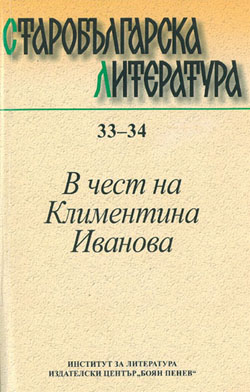Единство и многообразие на преводаческите норми през XIV в. (По материал от два южнославянски превода на триодните синаксари)
Uniformity and Variety in the Fourteenth Century Translation Norms (Based on the Material from Two South Slavic Translations of Synaxaria for...
Author(s): Lora TasevaSubject(s): Language studies
Published by: Институт за литература - БАН
Summary/Abstract: The article examines two South Slavic translations of the Synaxaria for the Triodion dating from the fourteenth century. The first is translation A, ascribed to a Middle Bulgarian man of letters, Zakcheus the Philosopher, and related to the Athonite reform of liturgical books. The second is translation C. Its localisation has been determined generally as the territory of contemporary West Bulgaria, Macedonia or South Serbia. The comparison of the two translations has shown that, though being oriented to precise presentation of the formal models of the original, they reproduce the instant linguistic models at a different extent. The reproduction differs in approaches and means used. In this aspect translation C exhibits greater independence from the text translated. The two translations are based on different earlier literary traditions. While translation C, as well as the Tarnovo redaction of translation A, implement the established language norms of the Old and Middle Bulgarian literature (e.g. keeping the Greek borrowings), the Athonite text of Zakcheus restricts their usage by replacing them with neologism loanwords. The Old Bulgarian lexical heritage does not have tantamount presence in the two translations. The Athonite and Tarnovo versions stick closer to the lexical inventory of the Preslav epoch, while translation C resorts more frequently to the Cyrillo-Methodian vocabulary.
Journal: Старобългарска литература
- Issue Year: 2005
- Issue No: 33-34
- Page Range: 445-457
- Page Count: 13
- Language: Bulgarian
- Content File-PDF

